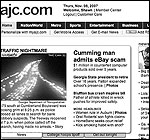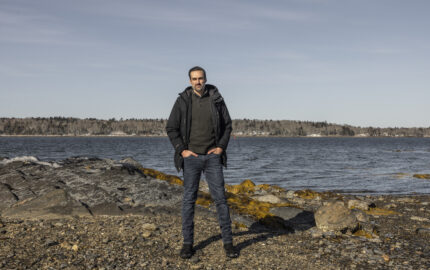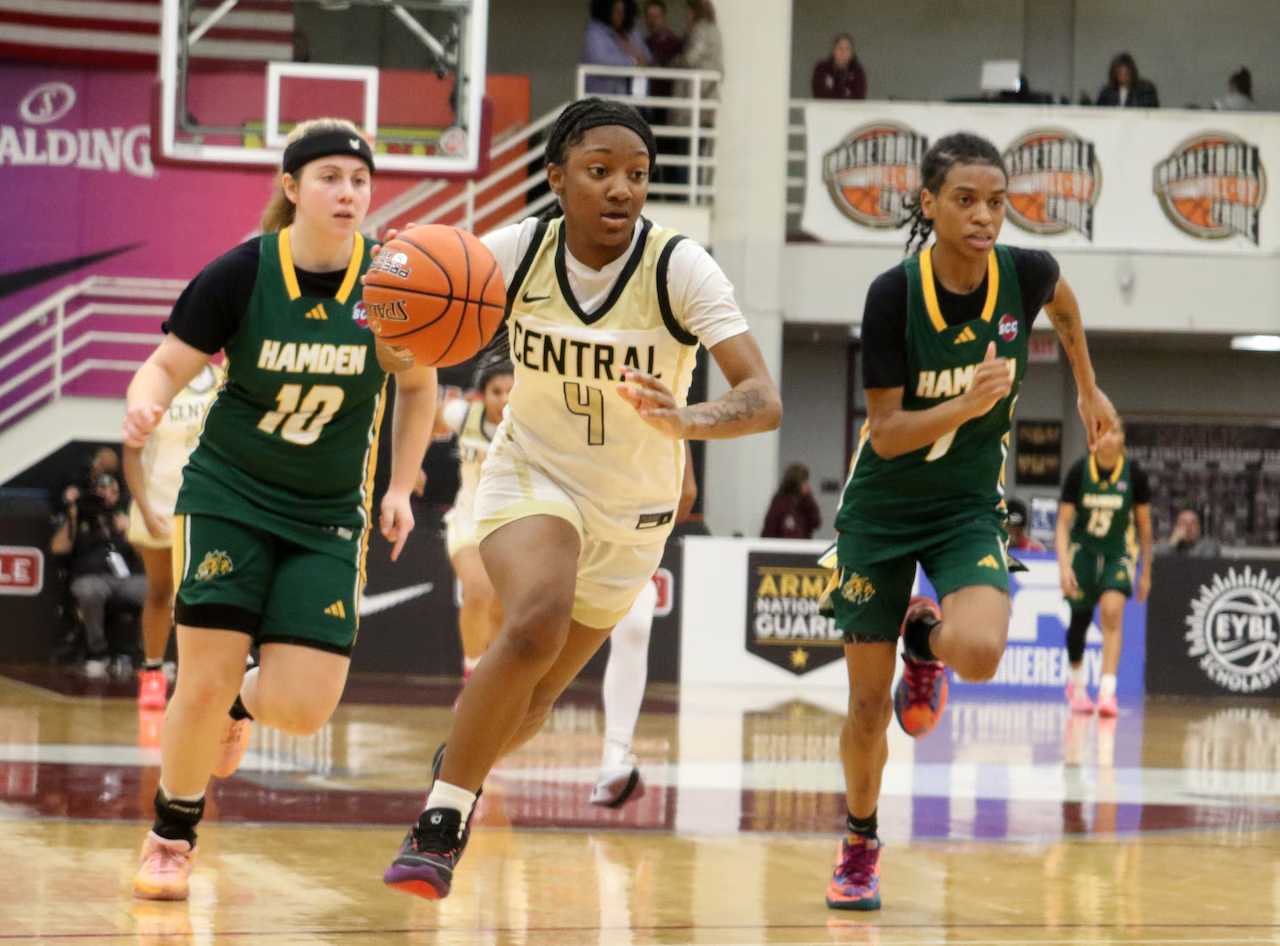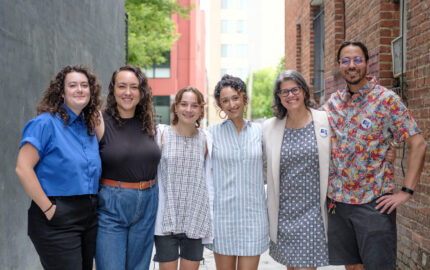Think about inventing a contemporary newsroom. How would it be organized? Around the sections of a print newspaper—with departments such as metro, business, sports and features? Not likely. With people finding information and news through search engines rather than section headers, this approach is horribly outdated. And it’s arcane, when business pressures are forcing newspapers to kill sections. It’s inefficient, too, when breaking news is usually published first online, not in print.
Yet this remains the organizing structure of most U.S. newsrooms. Until recently, it was true of ours, too, at The Atlanta Journal-Constitution (AJC).
Until earlier this year, our online department was one of more than a dozen in the newsroom, and it competed for the same dollars and resources as the newspaper’s features or sports department. Our Web site, ajc.com, thrived only because newsroom leaders sold the message that online mattered in everything we did. Our success at integrating the Web with print, and vice versa, was spotty and depended entirely on the strength of the editors’ sales jobs.
In 2006, we decided this way of doing things was no longer good enough. For the long haul, we had to address our newsroom’s core structure. The AJC and ajc.com had to become faster and more nimble. Having more than a dozen desks and departments devoted to specific sections of the newspaper had worked when print was king, but the new reality required significant change. Foremost in our minds was finding ways to reduce management layers, promote quicker decision-making, and enable faster movement of resources. We also had to more tightly focus our mission on our competitive edge—our knowledge of metro Atlanta, our deep local reporting resources, and our expertise on topics of local interest.
In reinventing our news organization to position us to grow digitally, we were not willing to abandon our newspaper and its devoted readers. But we did decide to quit chasing marginal readers in print. Instead we would tailor the newspaper for people who we know still want a newspaper, while working to grow our Web site to be metro Atlanta’s leading source for breaking news and information. In developing this strategy, it became clear that ajc.com would be our new “mass medium,” while our newspaper would become a specialty product for those who want deep, local enterprise reporting that they can’t get from any other source.
Understanding this new dynamic was different than living it. Our newsroom, as it was functioning at the time, was not organized to provide these two distinct products. Nor would it work to tinker around the edges, so our paper’s editor, Julia Wallace, along with a small leadership group, decided to abolish all existing departments and invent a new newsroom.
Beginning in the second week of July, the AJC began operating with an entirely new structure—flatter and more nimble—that allows us to move wherever our readers and users take us. Two new content departments, News & Information and Enterprise, focus on producing unique local content for print and online. Our two production departments, Print and Digital, take the content and decide how best to offer it in distinct ways for those who will consume it. These various departments function in tandem, which means that our newsroom system demands collaborative decision-making. Expertise about reporting news and gathering information is thus aligned with knowledge about what content our audience is seeking in print and on the Web.
Each of these four interrelated parts has certain tasks and is designed to perform those and to work collaboratively with the others.
News & Information (N&I): Our largest department—staffed from dawn until midnight, seven days a week—has beat reporters, columnists, general assignment reporters, photographers and others who gather news. N&I’s first client is Digital; reporters in N&I strive to break news, develop scoops, file quickly for the Web while learning what constitutes the “Web experience” and keeping in mind the desire to grow our online audience. But news and scoops gathered for ajc.com also serve our print readers. There is also a new group of information specialists charged with gathering and editing informational content such as city guides, calendars and consumer tips. These items are designed to help Web site visitors quickly find information to assist them in their daily lives and return them to our site often as a valued resource.
Digital: This department consists of producers who prepare content for publishing on the Web; channel managers who oversee content areas, such as business or sports, and multimedia specialists. They get news onto our Web site while it is breaking and constantly update the site to draw readers back. Some newly created positions include interactivity editors, designed to keep the conversation going with our audience, and digital managers, who think strategically about how to grow audience in such key areas as high school sports and entertainment.
Enterprise: Here the talents of reporters and editors are concentrated in several specialty areas—watchdog and investigative reporting, explanatory reporting, narrative writing, profiles, obits and criticism—and these make the newspaper a unique source of news, analysis and information. Enterprise’s first client is print, and the reporters and editors in this department are charged with providing unique local section front stories every day—stories readers will not find anywhere else. A few examples: A story on a university that continued to water its athletic fields in the midst of a complete ban on all outdoor watering and an in-depth look at the life of a local man recently charged by federal authorities with training guards at two Nazi concentration camps to use attack dogs.
Print: There are designers and copyeditors, but also newly created positions of section editors. These are “presentation specialists” who do not oversee what reporters do but instead focus on producing the best sections they can with the content they receive from N&I and Enterprise. Here the concern is with pacing, presentation and mix; these were not always top priorities before content and presentation were separated. New positions include “big type writers,” who work on key headlines and captions to draw readers into pages and sections.
One key change in the reorganization was to more clearly define our content-gathering mission as local. That doesn’t mean the newspaper or ajc.com have abandoned national and international news. We aggregate that news from wires, rather than using our own staff. It was a tough choice to make, but we decided every time a reporter traveled out of town to cover a regional or national news story, a local story was probably being overlooked. Our readers can find regional, national and international news from other sources. They depend on us to bring them local news. We still take a sophisticated and global approach to telling local stories. For example, an Enterprise reporter was in Hawaii in October to follow the story of a local soldier accused of murdering a detainee in Iraq.
Four months into the reorganization, the new newsroom is developing according to plan. We’re doing a better job of growing our digital audience and in finding stories that keep loyal print readers buying the paper. Of course, our work is not nearly done, and we have many unresolved questions: How locally focused should a local newspaper be? What is required to reinvent the newspaper to serve loyal readers, rather than chasing occasional ones? How do we continue to build our digital reach to become more of the mass medium that our long-term strategy calls for?
The new structure is still daunting for many in the newsroom. Jobs and people have been displaced; many are in new roles and doing work that is not altogether familiar to them at a time when nearly every workflow system in the newsroom has changed. Some priorities of our news organization are different, and some of what reporters and editors loved doing is no longer practical. For example, we don’t have a national movie critic, and we eliminated a roving regional beat. With fewer newsroom resources (a voluntary buyout accompanied the reorganization), many are working harder.
Still, our advantages are many. We have committed owners—a private, diversified company with a long history in journalism—and great love of what we do. We have a strong, talented staff with deep local knowledge. I am humbled by how they are working to adapt to these huge changes and learning new ways of doing their jobs while remaining committed to what is best about journalism’s possibilities.
Will our reorganization ultimately work? I’m confident it will, and I’m also certain that our newsroom won’t continue to look the way we redesigned it earlier this year. That is precisely the point of what we set out to do—to create a newsroom capable of change as it sees the need to do so. Instead of standing still—fearful of the future—we’ve taken some control of our fate. As our publisher, John Mellott, puts it: “We are not in the business of preservation. We are in the business of creation.” There’s no business I’d rather be in.
Shawn McIntosh is director of culture and change at The Atlanta Journal-Constitution and ajc.com. Portions of this article were prepared for the newspaper’s entry in The Associated Press Managing Editors’ Innovator of the Year award.
Yet this remains the organizing structure of most U.S. newsrooms. Until recently, it was true of ours, too, at The Atlanta Journal-Constitution (AJC).
Until earlier this year, our online department was one of more than a dozen in the newsroom, and it competed for the same dollars and resources as the newspaper’s features or sports department. Our Web site, ajc.com, thrived only because newsroom leaders sold the message that online mattered in everything we did. Our success at integrating the Web with print, and vice versa, was spotty and depended entirely on the strength of the editors’ sales jobs.
In 2006, we decided this way of doing things was no longer good enough. For the long haul, we had to address our newsroom’s core structure. The AJC and ajc.com had to become faster and more nimble. Having more than a dozen desks and departments devoted to specific sections of the newspaper had worked when print was king, but the new reality required significant change. Foremost in our minds was finding ways to reduce management layers, promote quicker decision-making, and enable faster movement of resources. We also had to more tightly focus our mission on our competitive edge—our knowledge of metro Atlanta, our deep local reporting resources, and our expertise on topics of local interest.
In reinventing our news organization to position us to grow digitally, we were not willing to abandon our newspaper and its devoted readers. But we did decide to quit chasing marginal readers in print. Instead we would tailor the newspaper for people who we know still want a newspaper, while working to grow our Web site to be metro Atlanta’s leading source for breaking news and information. In developing this strategy, it became clear that ajc.com would be our new “mass medium,” while our newspaper would become a specialty product for those who want deep, local enterprise reporting that they can’t get from any other source.
Understanding this new dynamic was different than living it. Our newsroom, as it was functioning at the time, was not organized to provide these two distinct products. Nor would it work to tinker around the edges, so our paper’s editor, Julia Wallace, along with a small leadership group, decided to abolish all existing departments and invent a new newsroom.
Beginning in the second week of July, the AJC began operating with an entirely new structure—flatter and more nimble—that allows us to move wherever our readers and users take us. Two new content departments, News & Information and Enterprise, focus on producing unique local content for print and online. Our two production departments, Print and Digital, take the content and decide how best to offer it in distinct ways for those who will consume it. These various departments function in tandem, which means that our newsroom system demands collaborative decision-making. Expertise about reporting news and gathering information is thus aligned with knowledge about what content our audience is seeking in print and on the Web.
Each of these four interrelated parts has certain tasks and is designed to perform those and to work collaboratively with the others.
News & Information (N&I): Our largest department—staffed from dawn until midnight, seven days a week—has beat reporters, columnists, general assignment reporters, photographers and others who gather news. N&I’s first client is Digital; reporters in N&I strive to break news, develop scoops, file quickly for the Web while learning what constitutes the “Web experience” and keeping in mind the desire to grow our online audience. But news and scoops gathered for ajc.com also serve our print readers. There is also a new group of information specialists charged with gathering and editing informational content such as city guides, calendars and consumer tips. These items are designed to help Web site visitors quickly find information to assist them in their daily lives and return them to our site often as a valued resource.
Digital: This department consists of producers who prepare content for publishing on the Web; channel managers who oversee content areas, such as business or sports, and multimedia specialists. They get news onto our Web site while it is breaking and constantly update the site to draw readers back. Some newly created positions include interactivity editors, designed to keep the conversation going with our audience, and digital managers, who think strategically about how to grow audience in such key areas as high school sports and entertainment.
Enterprise: Here the talents of reporters and editors are concentrated in several specialty areas—watchdog and investigative reporting, explanatory reporting, narrative writing, profiles, obits and criticism—and these make the newspaper a unique source of news, analysis and information. Enterprise’s first client is print, and the reporters and editors in this department are charged with providing unique local section front stories every day—stories readers will not find anywhere else. A few examples: A story on a university that continued to water its athletic fields in the midst of a complete ban on all outdoor watering and an in-depth look at the life of a local man recently charged by federal authorities with training guards at two Nazi concentration camps to use attack dogs.
Print: There are designers and copyeditors, but also newly created positions of section editors. These are “presentation specialists” who do not oversee what reporters do but instead focus on producing the best sections they can with the content they receive from N&I and Enterprise. Here the concern is with pacing, presentation and mix; these were not always top priorities before content and presentation were separated. New positions include “big type writers,” who work on key headlines and captions to draw readers into pages and sections.
One key change in the reorganization was to more clearly define our content-gathering mission as local. That doesn’t mean the newspaper or ajc.com have abandoned national and international news. We aggregate that news from wires, rather than using our own staff. It was a tough choice to make, but we decided every time a reporter traveled out of town to cover a regional or national news story, a local story was probably being overlooked. Our readers can find regional, national and international news from other sources. They depend on us to bring them local news. We still take a sophisticated and global approach to telling local stories. For example, an Enterprise reporter was in Hawaii in October to follow the story of a local soldier accused of murdering a detainee in Iraq.
Four months into the reorganization, the new newsroom is developing according to plan. We’re doing a better job of growing our digital audience and in finding stories that keep loyal print readers buying the paper. Of course, our work is not nearly done, and we have many unresolved questions: How locally focused should a local newspaper be? What is required to reinvent the newspaper to serve loyal readers, rather than chasing occasional ones? How do we continue to build our digital reach to become more of the mass medium that our long-term strategy calls for?
The new structure is still daunting for many in the newsroom. Jobs and people have been displaced; many are in new roles and doing work that is not altogether familiar to them at a time when nearly every workflow system in the newsroom has changed. Some priorities of our news organization are different, and some of what reporters and editors loved doing is no longer practical. For example, we don’t have a national movie critic, and we eliminated a roving regional beat. With fewer newsroom resources (a voluntary buyout accompanied the reorganization), many are working harder.
Still, our advantages are many. We have committed owners—a private, diversified company with a long history in journalism—and great love of what we do. We have a strong, talented staff with deep local knowledge. I am humbled by how they are working to adapt to these huge changes and learning new ways of doing their jobs while remaining committed to what is best about journalism’s possibilities.
Will our reorganization ultimately work? I’m confident it will, and I’m also certain that our newsroom won’t continue to look the way we redesigned it earlier this year. That is precisely the point of what we set out to do—to create a newsroom capable of change as it sees the need to do so. Instead of standing still—fearful of the future—we’ve taken some control of our fate. As our publisher, John Mellott, puts it: “We are not in the business of preservation. We are in the business of creation.” There’s no business I’d rather be in.
Shawn McIntosh is director of culture and change at The Atlanta Journal-Constitution and ajc.com. Portions of this article were prepared for the newspaper’s entry in The Associated Press Managing Editors’ Innovator of the Year award.




